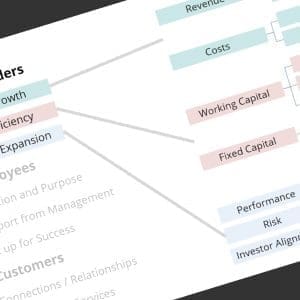I had a fun time this week proposing an open source alternative for an aging component of our EAI infrastructure. The reaction was so classic – the instant some IT folks saw the words “open source” in large type on the piece of paper, they smiled, crossed their arms, and tut-tutted the idea away. Oh, I heard all the classic shoot-down arguments …
- “… critical piece of our day to day business transactions …”
- “… I rarely need to call, but when I do, I need to have someone to call …”
- “… not as long as the same players [tech arch thought leaders] are still here …”
All I heard was a bunch of IT folks focused on nothing but technology, and completely miss the business implications of the conclusions they are jumping to. Remember, it’s near the end of the year, and many organizations are looking at major budget decisions for next year. Is your business looking for major cuts? Can you anticipate conversations like that in the next few weeks? Then keep your business hat on, and let’s revisit those arguments in light of the [budget cutting] season …
- “… critical piece …” – Do not ever forget that all business decisions should be deconstructed into cost-benefit equations. Yes, this middleware is critical to the transactions – but annual maintenance is $250K per year. What if we stop paying maintenance? It means we can never upgrade – but who cares? We don’t push the envelope on features, changes are rife with SarbOx complexities, and it runs fine just the way it is – no performance issues, no feature issues. At the very least, we must present the business with the option.
- “… I rarely need to call …” – Sure, but everybody has war-stories of clueless tech support and having to kill yourself to get to level 3 before you get someone who knows what they are doing. I have never personally found any relationship between the size of the maintenance fees and the quality of the tech support. Also – this reflects a very late-90’s understanding of the open-source business models out there – plenty of organizations offer paid support for larger corporations and more complex applications.
- “… not as long as …” – Well, if this actually passes for a valid reason not to consider something new (that’s the way we’ve always done it) then I’d suggest thinking very seriously about looking around for another IT organization. We try to present new and better ways of processing transactions (lower cost and higher quality) and looking at information (insights leading to opportunities) – what, we can’t eat our own conceptual dog food?
And here’s another thing to wrap your brain around. If we say that software and hardware spend on stuff like this is “committed”, unchangeable, and sacrosanct, but we still can’t make a good case for retaining our current budget level – well, guess what gets cut next? So, lets revisit the economics of the $250K maintenance charge; I’m sure we can justify 1.5 to 2 FTEs, plus training to get their skill set up to where it needs to be, at or less than that amount. Note we are also valuing the organization’s people, investing in skills, etc. – the stuff that most IT staffs like to see and hear their leadership doing! What’s really at stake, potentially, is the current “power structure” represented by who knows what technologies, who is comfortable with the as-is, and who is in control of key technologies.
Now, please don’t think I want to convert all of my current employer’s critical systems to FOSS. I’m just trying to illustrate that you have to ask these questions, and be willing to present to pros and cons of cutting software, hardware, services, and headcount when having budget discussions. Have some self-confidence … you very well may be able to make a case for increased budget when everyone else has to cut! (Don’t scoff, it’s happened – and it’s a heck of a lot easier to make happen when the conversations are quantified with business-oriented cost/benefit and risk/reward concepts.)






This Post Has 0 Comments